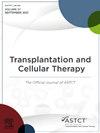基于风险的细胞起始材料收集点资格认证:确定制造商审核范围和减少重复工作的工具。
IF 3.6
3区 医学
Q2 HEMATOLOGY
引用次数: 0
摘要
根据法规要求,细胞和基因治疗产品(CGT 产品)生产商必须对进行细胞采集和处理的场所进行资格审查,这是生产过程的一部分。使用审核对生产基地进行资格认证是药品传统供应商质量模式的一部分。由于近年来 CGT 行业的快速发展,医疗机构和制造商发现,当审核适用于从患者/受试者处采集细胞起始材料 (CSM) 用于生产时,很难管理日益增加的工作量和所需资源。为了减轻审核负担,一些生产商采用了基于风险的方法来确定审核的需求和范围。本评论的作者建议所有生产商在适当的时候采用基于风险的评估计划,并解释了如何使用为促进基于风险的方法而创建的工具来简化和减少重复审核。这种方法和工具由 NextGen 行业工作组 (IWG) 现场认证工作流创建,其代表来自制药和生物技术公司、医疗机构、认证组织和其他利益相关者,与其他多利益相关者团体(包括 ASTCT 80/20 工作组)的建议相一致。这些工具旨在简化各生产商执行的生产基地资格认证流程,提供标准化的审核或差距分析评估方法。为已通过 AABB(血液与生物治疗促进协会)和 FACT(细胞治疗认证基金会)等机构认证的研究机构提供简短的审核模式,帮助制造商专注于特定产品的要求,而不是重新评估已通过其他机构详细审核的系统。本文章由计算机程序翻译,如有差异,请以英文原文为准。
Risk-Based Qualification of Cellular Starting Material Collection Sites: Tools to Determine Scope of Manufacturer Audits and Reduce Duplicative Efforts
Cellular and Gene Therapy product (CGT product) manufacturers are required by regulations to qualify sites performing cell collection and processing as part of their manufacturing processes. The use of audits to qualify a site is part of the traditional supplier quality models for drug products. Due to the rapid growth of the CGT industry in recent years, healthcare institutions and manufacturers are finding it difficult to manage the increasing workload and resources needed to support audits when they are applied to the provision of Cellular Starting Material (CSM) collection from patients/subjects for the purpose of manufacturing. To alleviate this audit burden, several manufacturers have applied risk-based approaches to determine the needs and scope of audits. The authors of this commentary recommend that all manufacturers utilize a risk-based assessment program when appropriate and explain the use of tools created to facilitate a risk-based approach to streamline and reduce duplicative audits. This approach and tools, created by The NextGen Industry Working Group (IWG) site certification workstream with representation from pharmaceutical and biotech companies, health care institutions, accrediting organizations, and other stakeholders, is aligned with proposals from other multistakeholder groups, including the ASTCT 80/20 Task Force. The tools aim to streamline the site qualification processes performed by each manufacturer, offering a standardized approach to audits or gap analysis assessments. Offering an abbreviated audit model for sites that have already attained accreditation through agencies such as the AABB (Association for the Advancement of Blood & Biotherapies) and FACT (Foundation for the Accreditation of Cellular Therapy), helping the manufacturer to focus on product-specific requirements rather than re-evaluating systems that have already been audited in great detail by other parties.
求助全文
通过发布文献求助,成功后即可免费获取论文全文。
去求助
来源期刊

Transplantation and Cellular Therapy
Medicine-Hematology
CiteScore
7.00
自引率
15.60%
发文量
1061
审稿时长
51 days
 求助内容:
求助内容: 应助结果提醒方式:
应助结果提醒方式:


